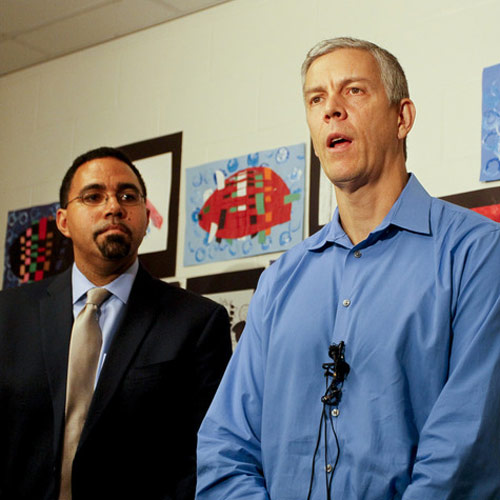Sign up for the daily CJR newsletter.
It’s been eight months since the Tampa Bay Times rolled out an investigation into five elementary schools in Florida’s Pinellas County that had become “Failure Factories”—almost exclusively black, with some of the worst test scores in the state, chronic violence, and crippling staff turn-over—and the impact just keeps on coming.
The county school district has reformed discipline practices to try to address the disparity in how black and white children are treated, and hired a “turnaround leader” who has a staff of eight and a charge to improve the schools. The district added 100 classroom aides, and community volunteer hours in the schools have more than doubled. The state legislature found $400,000 for a special reading program.
Then, just last week, the school district announced pay increases of up to $25,000 for teachers at the schools, in an effort to attract and retain better teachers. The school day at the five schools will be extended for an hour to give students more time devoted to learning to read, but also more time at recess and in art and music class. A minority achievement officer will be hired to look at systemic issues across the district.
That’s not all: Also last week, the US Department of Education opened a civil rights investigation into the district, the Times reported. Top department officials had first visited the district after reading the original Times series, which made clear that these aren’t just any struggling schools—they’re schools where student performance plummeted beginning in 2007, when the district abandoned an integration plan that had been in place for decades and the schools became resegregated.
The federal probe follows a state review launched last fall, and at the district level, the first reforms were put in motion even before the Times series was published. But lately, just tracking the fallout, as the paper has been doing on the series landing page, has become almost a full-time beat. “In February it seemed to start snowballing,” says Michael LaForgia, one of the reporters on the project.
The impact is noteworthy, but it’s not surprising. As I wrote in August, the series was deep, thorough, and authoritative. It didn’t hesitate to assign responsibility to local officials, and it carefully showed that many other schools serving poor or minority students around the state were doing a much better job of educating those kids. Some of the solutions Pinellas officials are trying are taken from efforts at other school districts that the series highlighted.
The series has already won a slew of awards. The response from readers has been impressive, too, thanks in part to the smart interactive “prologue” designed by data reporter Nathaniel Lash.
“A good project put out by the Times used to get between 75,000 and 100,000 page views,” LaForgia says. “As of this month, ‘Failure Factories’ was up to about 600,000 views from more than 260,000 unique visitors. Our prologue element alone drew more than 260,000 views.”
Despite the list of reforms, the response of school officials has been mixed, with some board members and others complaining that the newspaper is focused on the past. “We don’t care if they admit [mistakes] or not, as long as they help these children,” says reporter Lisa Gartner.
But the response from the broader community has been overwhelmingly positive, say Times journalists—though they do get the “occasional racist phone message,” reporter Cara Fitzpatrick told me.
Some hater also decided it would be a good idea to post the home address of Fitzpatrick and LaForgia, who are married. “And my driving record,” Fitzpatrick says. “That was fun.”
Then there was the mysterious subscription to Ebony magazine, which started showing up in the mail. “We have two kids,” LaForgia says. “It’s kind of hard to miss the message that ‘we know where you live.’ ” (On the other hand, Fitzpatrick says, she’s enjoyed reading it: “It’s a great magazine.”)
The reporters have no intention of backing down because of a few random racists. They recently met with their editors and gave them “a year’s worth of stories that we want to follow up on,” LaForgia says.
One angle to follow: whether there will be any serious effort to desegregate the schools. In March, the NAACP Legal Defense Fund announced it intends to revive the 50-year-old lawsuit that originally desegregated Pinellas schools.
Whatever happens on that front, the series is a great example of how a newspaper can make a concrete difference in a complex issue: Dive deeply into the data and report the hell out of what it shows.
Has America ever needed a media defender more than now? Help us by joining CJR today.







